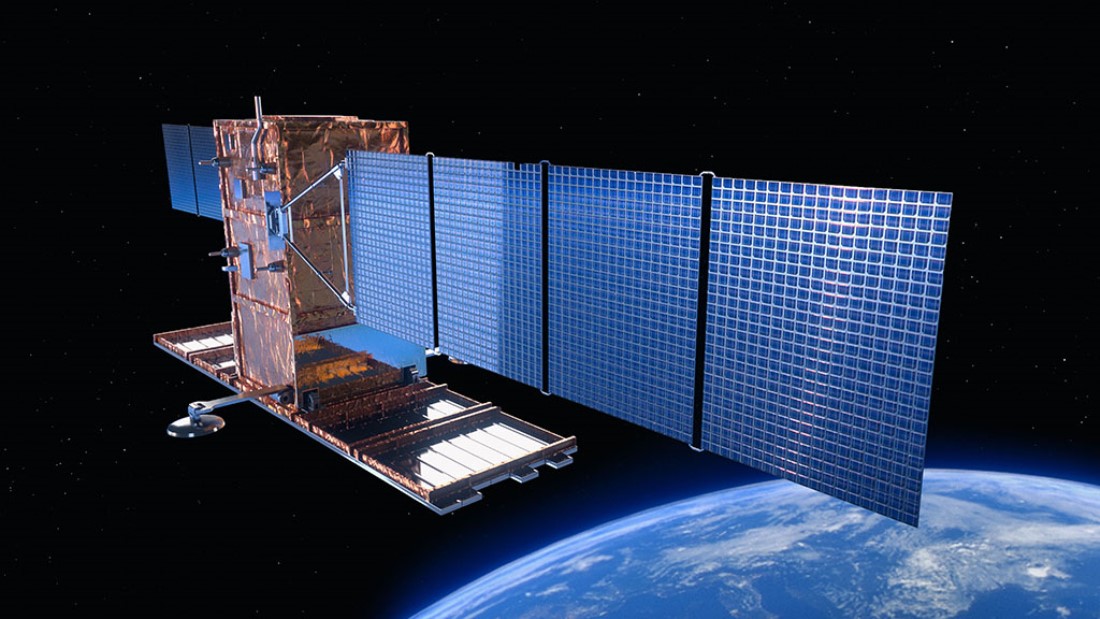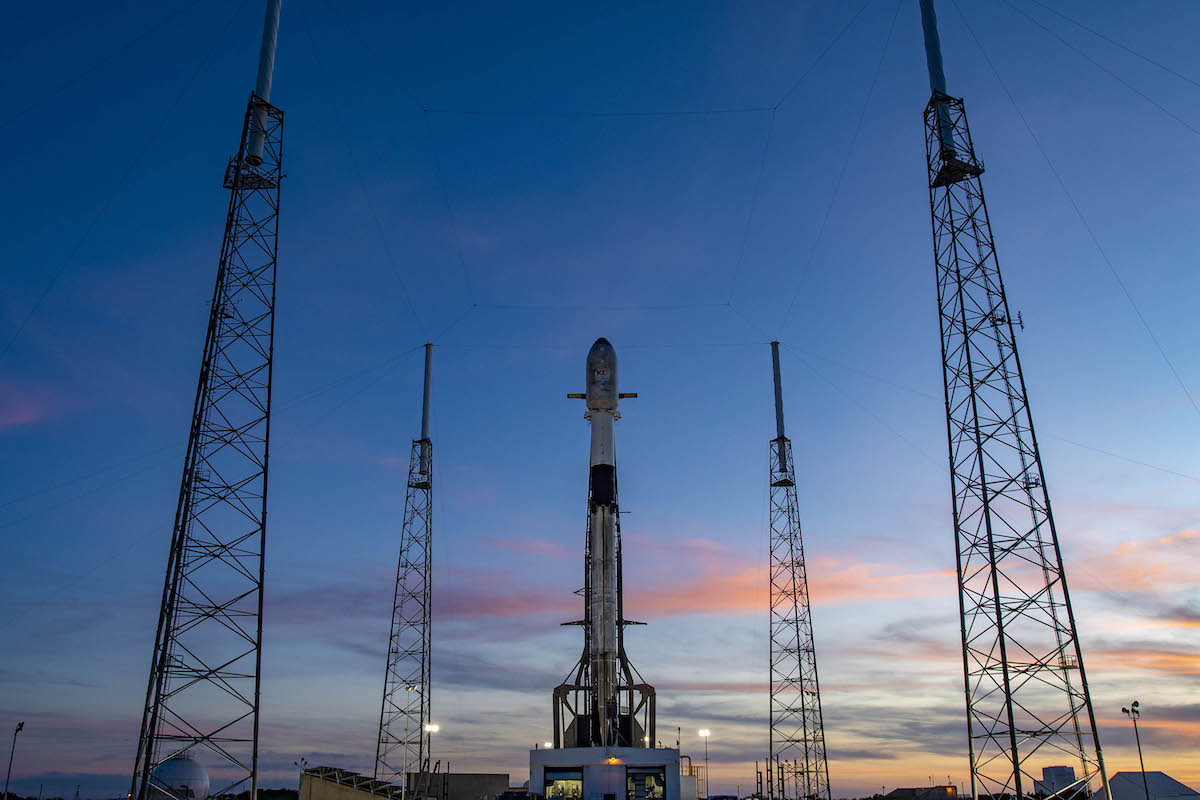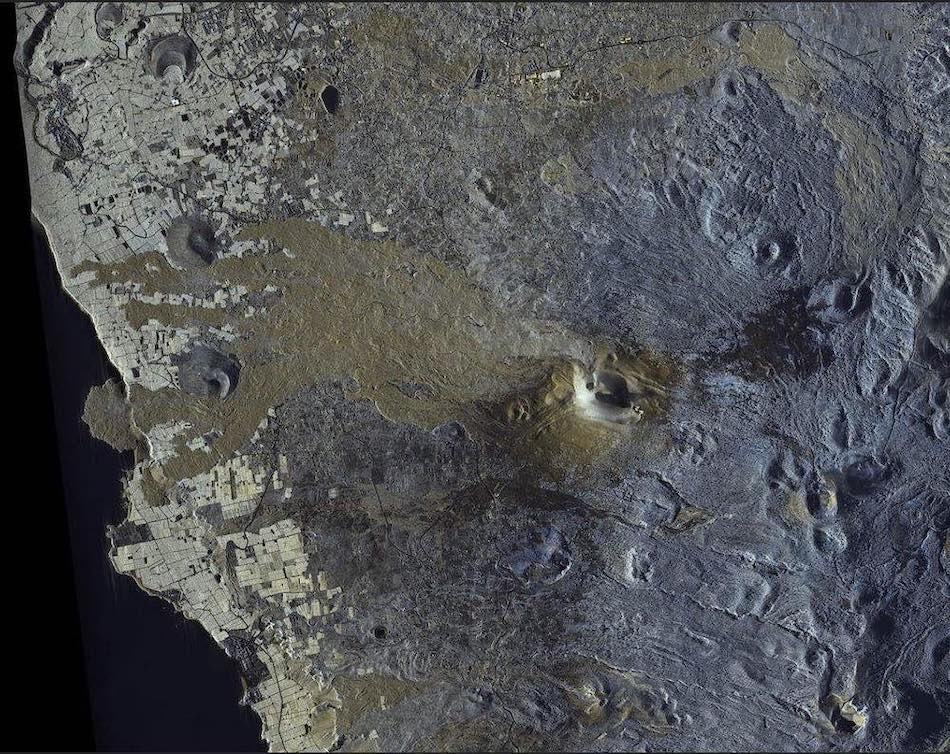
SpaceX plans to launch an Italian Earth observation satellite with radar vision Thursday evening from Cape Canaveral on a twilight flight that could dazzle spectators with the ascent and descent of the reusable Falcon 9 booster.
The mission is scheduled to get underway from pad 40 at Cape Canaveral Space Force Station at 6:11 p.m. EST (2311 GMT) Thursday. The launch will mark the fifth space mission to depart Florida’s Space Coast this month, and the fourth by SpaceX, continuing a busy start to 2022.
Nine engines will power the 229-foot-tall (70-meter) rocket south-southeast over the Atlantic Ocean with 1.7 million pounds of thrust.
If all goes according to plan, the second stage of SpaceX’s Falcon 9 rocket will deploy the Italian radar satellite — named COSMO-SkyMed Second Generation Flight Model 2 — into an orbit close to its planned operating altitude of 384 miles (619 kilometers).
The first stage of the Falcon 9, refurbished from two previous flights as a side booster on SpaceX’s Falcon Heavy rocket, will shut down less than two-and-a-half minutes after liftoff. Cold gas thrusters will flip the booster stage around to fly tail first, and three of the rocket’s Merlin engines will reignite to direct the first stage back toward Cape Canaveral.
The booster, itself 15 stories tall, will target a propulsive vertical touchdown on Landing Zone 1, a concrete site about 6 miles (9 kilometers) south of the Complex 40 launch pad. Meanwhile, the second stage of the Falcon 9 rocket will steer along a corridor parallel to Florida’s east coast, over Cuba and the Caribbean Sea, then over Central America on the way to a polar orbit.
SpaceX test-fired the Falcon 9 booster for this week’s launch on pad 40 Saturday, then rolled the rocket back to a nearby hangar to meet the COSMO-SkyMed radar satellite, weighing more 4,800 pounds, or about 2.2 metric tons, will a full load of propellant for in-orbit maneuvers.

SpaceX was expected to roll the rocket back out to pad 40 Wednesday, then raise the Falcon 9 vertical for final countdown preparations.
There’s a 60% chance of favorable weather for launch Thursday evening, according to the U.S. Space Force’s 45th Weather Squadron. The primary weather concerns are with ground winds and cumulus clouds, which could contribute to rocket-triggered lightning as the Falcon 9 climbs through the atmosphere.
A weather disturbance has brought rainy weather to Central Florida for much of the week.
“While deep moisture through the atmosphere gradually gets stripped away tonight into tomorrow, the proximity of this system coupled with robust onshore flow will still support scattered low-topped showers moving towards the coast on Thursday,” the weather forecast team wrote Wednesday. “Thus, the main weather concerns for launch day are lingering cumulus clouds and showers embedded in this low-level onshore flow as well as breezy conditions during liftoff.”
There’s also a moderate threat that winds or rough seas could exceed weather constraints for the Falcon 9’s return to Cape Canaveral.
At launch time, forecasters predict scattered rain showers, a mostly cloudy sky, winds from the northeast at 20 to 25 mph, and a temperature around 63 degrees Fahrenheit.
Weather conditions are expected to be similar Friday, when there’s also a 60% chance of good weather for launch. The launch time remains at 6:11 p.m. each day.
The spacecraft on top of the Falcon 9 rocket is the second of a new generation of COSMO-SkyMed radar imaging satellites. The fleet is intended for military and civilian use, and is funded by the Italian Space Agency, the Italian Ministry of Defense and the Italian Ministry of Universities and Research.
Each COSMO-SkyMed Second Generation, or CSG, spacecraft, built by Thales Alenia Space, carries a radar instrument designed to observe Earth during day and night passes. After launching on SpaceX’s Falcon 9 rocket, the CSG 2 satellite will unfurl its X-band radar antenna for testing before entering service.
The satellite is capable of capturing colorized radar images with a horizontal resolution as good as 1 foot, or 30 centimeters. The highest-resolution images are restricted for use by institutions approved by the Italian government.
The second generation of Italian radar observation satellites will expand, and eventually replace, coverage provided by four first-generation COSMO-SkyMed spacecraft launched aboard United Launch Alliance Delta 2 rockets from 2007 through 2010.
The Italian government has ordered four second-generation COSMO-SkyMed satellites from Thales. The first of the new series of radar satellites launched in December 2019 aboard a Russian Soyuz rocket from French Guiana.
The second CSG satellite was originally booked with Arianespace to launch on a European Vega C rocket. But delays in the development of the Vega C, an uprated version of the Vega launcher, have pushed back the new rocket’s debut to no earlier than May.
The Vega C would not be able to launch the CSG 2 satellite until later this year, following the Vega C’s inaugural mission. That prompted Italian officials to look for a new ride, eventually resulting in their selection of SpaceX’s Falcon 9 rocket after Arianespace was unable to accommodate the CSG 2 launch.
Instead of launching the CSG 2 satellite, a Vega C rocket will instead launch the third spacecraft in the COSMO-SkyMed Second Generation fleet in 2024, according to ASI.
Featuring X-band synthetic aperture radars, the COSMO-SkyMed satellites collect imagery by sending radar signals toward Earth, then collecting the beams reflected off the surface. The reflected signal contains information about surface topography and roughness, yielding an image that can show vegetation, water surfaces, roads, bridges, airplanes and ships, among other features.
The Italian government uses COSMO-SkyMed radar data for national security and public safety applications, such as monitoring natural disasters like the 2016 earthquakes in Central Italy and the La Palma volcanic eruption last year.

COSMO-SkyMed satellites also track maritime traffic and oil spills, and help with search and rescue operations. The satellites have also provided data for scientists chart the impacts of climate change, from rising sea levels to the melting of glaciers.
Italian officials said COSMO-SkyMed data help farmers keep tabs on their crops, tracking the status of rice fields in Thailand and vineyards in France. Radar imagery is also useful in regularly observing large infrastructure projects, such as dams, bridges, and buildings, according to Thales Alenia Space.
The COSMO-SkyMed Second Generation satellites are designed to function at least seven years. The CSG satellites can capture images day and night with its radar instrument, surveying the planet in narrow-field and wide-field imaging modes.
A company named e-GEOS, a joint venture between the Italian Space Agency and Telespazio, sells COSMO-SkyMed imagery on the commercial market.
Since 2008, the Italian radar satellite fleet has acquired more than 2 million images. Each spacecraft has captured an average of 300 radar images per day, according to Thales Alenia Space.
The COSMO-SkyMed satellites work in tandem with Argentina’s two SAOCOM 1 radar satellites, which collect data using L-band instruments. Both SAOCOM 1 satellites launched on Falcon 9 rockets.
Email the author.
Follow Stephen Clark on Twitter: @StephenClark1.
